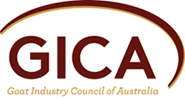The Australian goat industry’s increasing capacity to supply the right kind of product at the right time and guarantee that product’s integrity, as well as steady demand from overseas markets, has reinforced Australia’s position as the world’s largest exporter of goat meat. The Australian goat industry was worth $72 million in goat meat exports in 2008/2009, up 30% on the previous year. Volume was up from 16,327 tonnes to 22,514 tonnes.
While this improved supply can be attributed to a number of factors, including tight mutton supply, the emergence of the goat depoting sector is helping deliver large volumes of healthy goats to market, consistently and on time.
The importance of goat depots was recently recognised through the launch of goat industry Depot guidelines, a new module in Meat & Livestock Australia’s Going into goats: Profitable producers’ best practice guide (GiG Guide).
So, what is a goat depot?
A goat depot is an operation where goats, consolidated for the purpose of live export, slaughter, trading, fattening, or growing out, are held in a fenced area for a period of time that requires the provision of food and water.
Depots are typically located in rangeland or pastoral areas and operate by buying goats from surrounding producers, drafting and possibly finishing these to meet market specifications and then transporting the goats in commercially viable lots to market. Goat depots have evolved out of necessity to meet market demand and it is now important that the ongoing viability of the sector be supported. Discussions between Meat & Livestock Australia (MLA), the Goat Industry Council of Australia (GICA) and the industry revealed that this would be best achieved by encouraging best practice among depot operators.
Glenn Telford, GICA councillor and goat producer from Roma, Queensland, was consulted during the development of the guidelines and spoke at the launch of the new module at the Roma Meat Profit Day. “Goat depots play an important role in regulating the supply of goats to market and it is appropriate that the industry now invest in the sector to ensure that this link in the supply chain is operating as effectively as possible” Glenn said.
Rick Gates, operator of what is perhaps Australia’s largest goat depot, Burndoo Station near Wilcannia, New South Wales, was also involved in the development of the guidelines: “Standardising practices across the depoting sector, through the introduction of best practice guidelines, will reinforce Australia’s position as the world’s largest exporter of goat meat and help the industry stay in front on important issues such as animal welfare and traceability.”
The guidelines have been developed in consultation with industry as the latest instalment in the GiG Guide. Owners of the GiG Guide will shortly receive a letter inviting them to order their free copy of the Depot guidelines. As the new module extensively references other sections of the guide, the Depot guidelines will not be made available as a standalone publication.
The GiG Guide is $60 for MLA Members and $120 for non-members and can be ordered through the MLA website.
